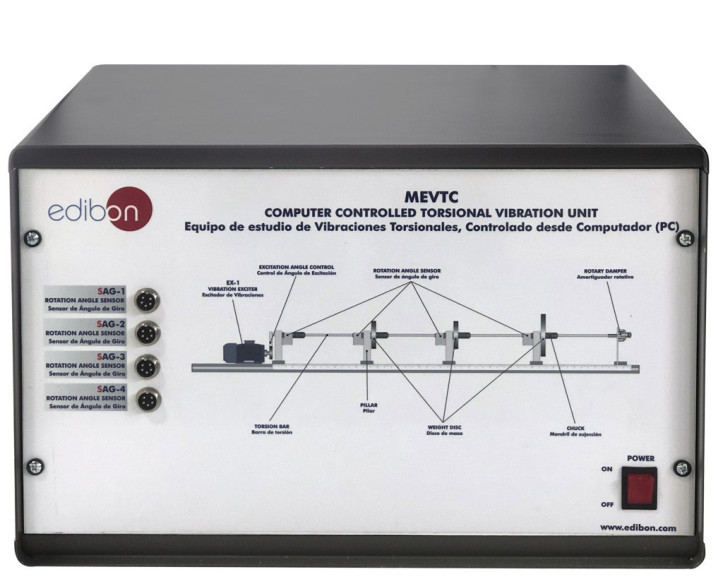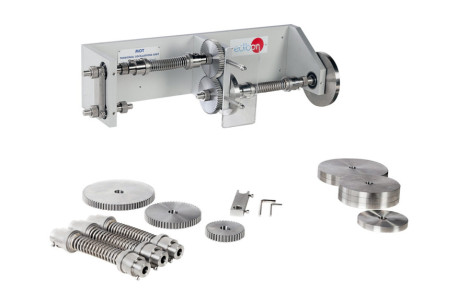L'Unité pour Étude de Vibrations Torsionnelles, Contrôlée par Ordinateur (PC), "MEVTC", a été conçu par EDIBON pour étudier la torsion subie par certains arbres avec un mouvement de rotation, en plus d'étudier la rigidité de torsion et le comportement d'un système de vibration de torsion avec un, deux ou trois disques d'inertie.
Les éléments principaux de l'unité "MEVTC" sont une barre en acier d'un diamètre de 6 mm et une série de disques d'inertie, qui reposent sur des piliers avec roulements. Le système se comportera différemment en fonction de la disposition et du nombre de masses d'inertie agissant sur l'unité.
Le système est soumis à une vibration générée par l'excitateur actionné par un moteur électrique. Les angles d'excitation peuvent varier. Le logiciel contrôle la vitesse d'excitation du moteur, en fonction de l'expérience à réaliser. Ils mesurent l'angle de rotation de la barre d'acier dans la position du pilier auquel elle est associée. De même, les courbes de mouvement oscillatoire qui définissent le système sont obtenues à partir de ces capteurs.
D'autre part, la fonction de cet amortisseur est d'atténuer les vibrations créées par l'excitateur.
Cette Unité Contrôlée par Ordinateur est fournie avec le Système de Contrôle par Ordinateur EDIBON (SCADA), et comprend : l'Unité elle-même + un Boîtier d'Interface de Contrôle + une Carte d'Acquisition de Données + des Progiciels de Contrôle par Ordinateur, d'Acquisition de Données et de Gestion de Données, pour contrôler le processus et tous les paramètres impliqués dans le processus.
 Préférences sur les cookies
Préférences sur les cookies



























